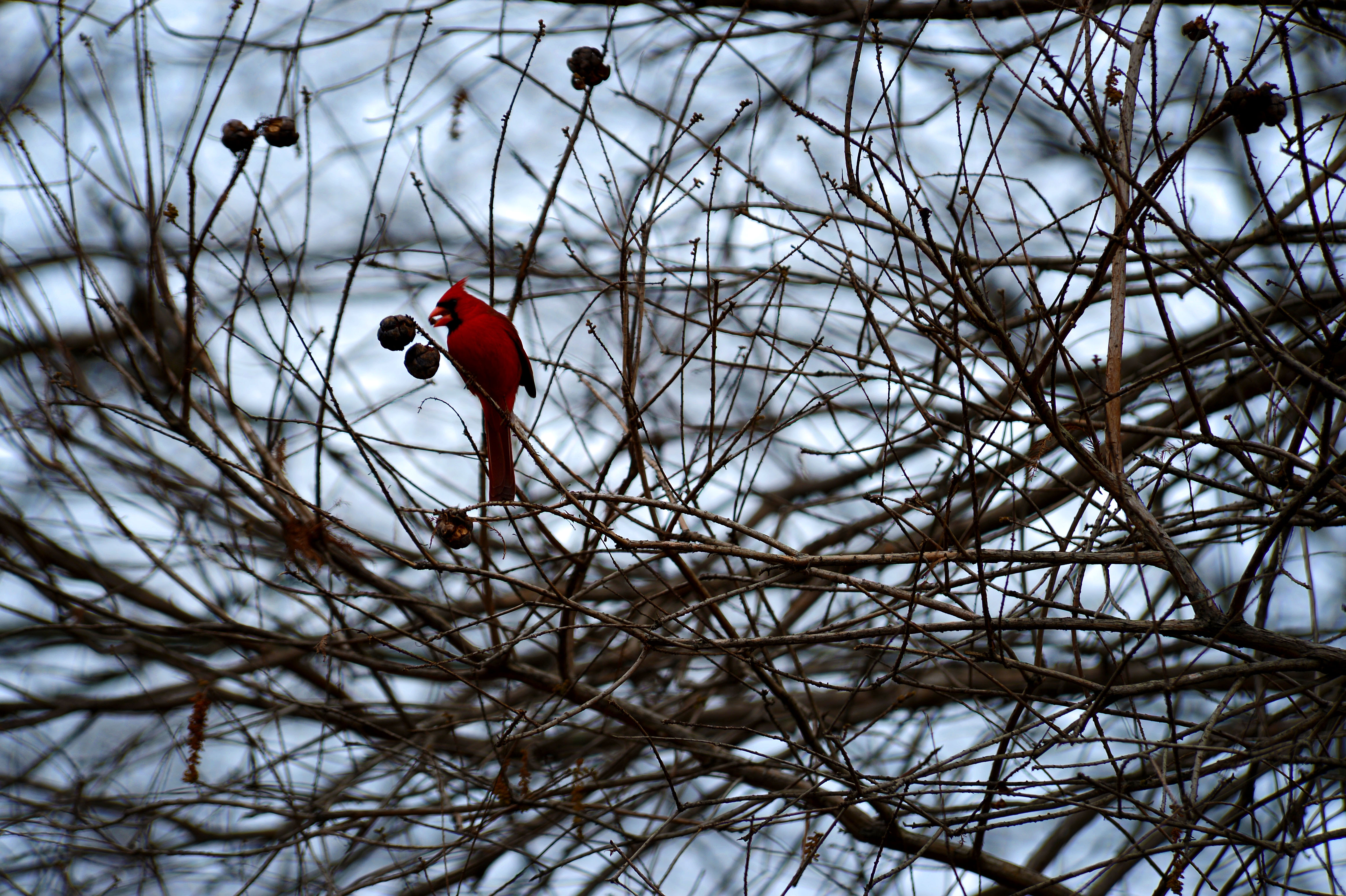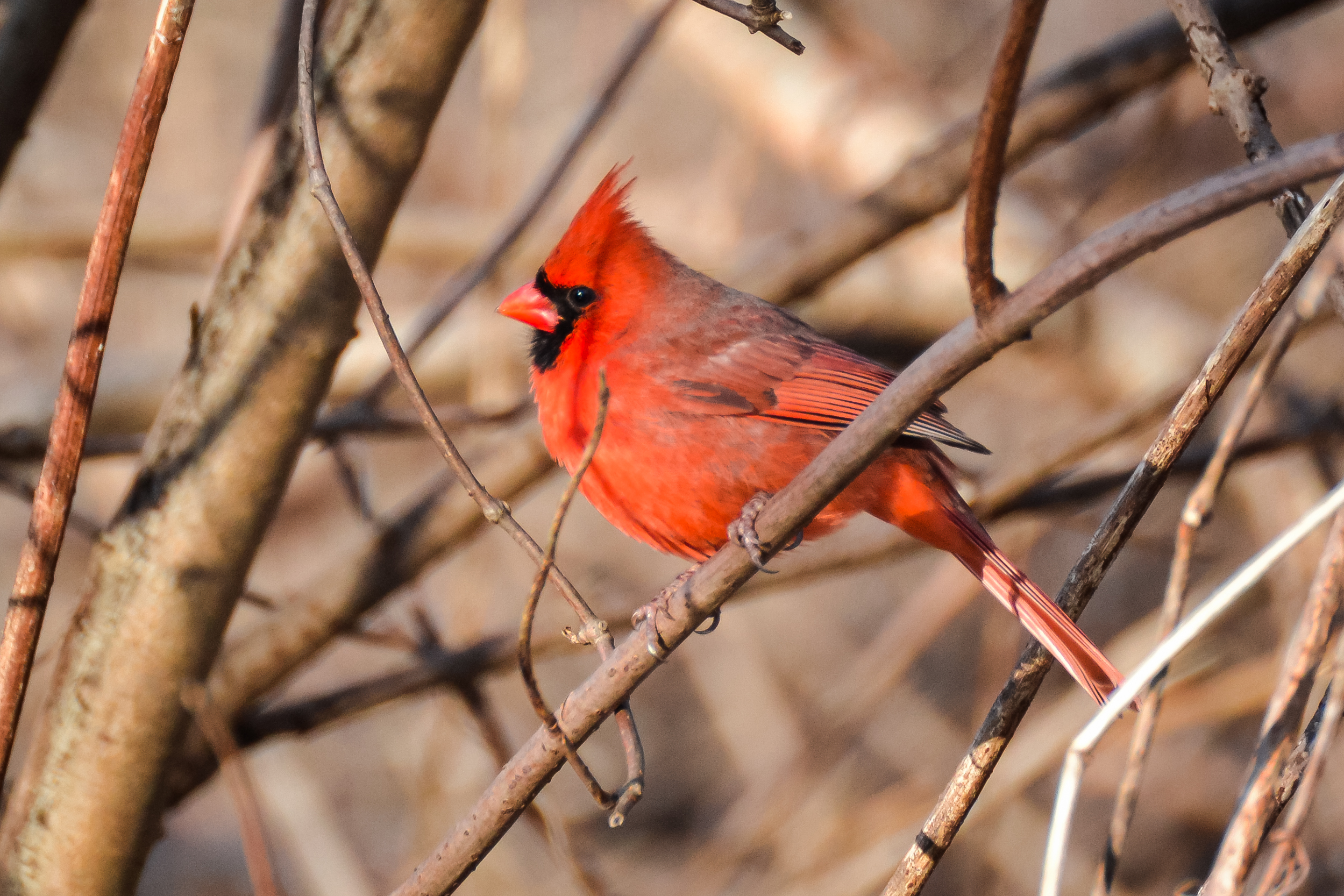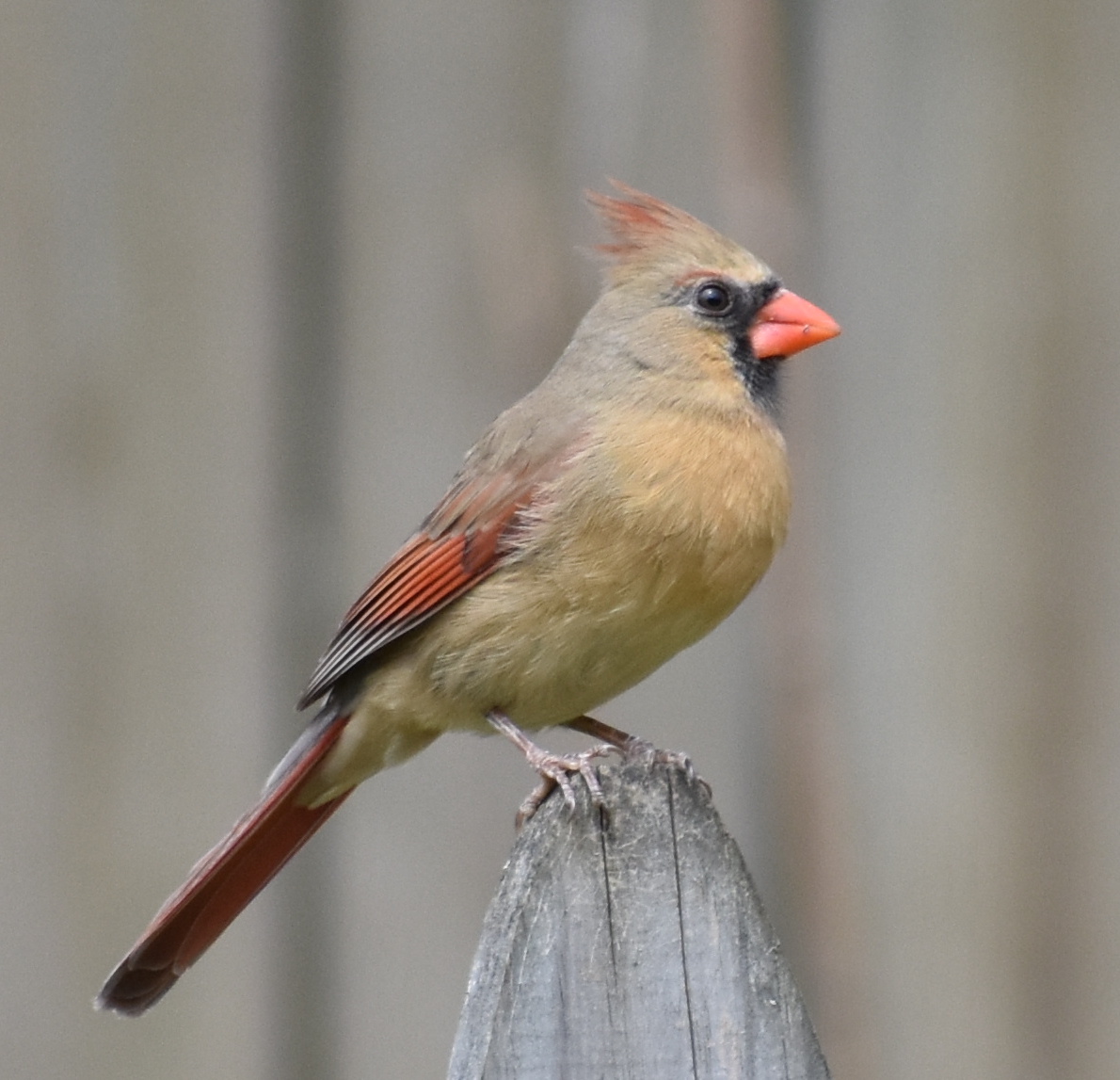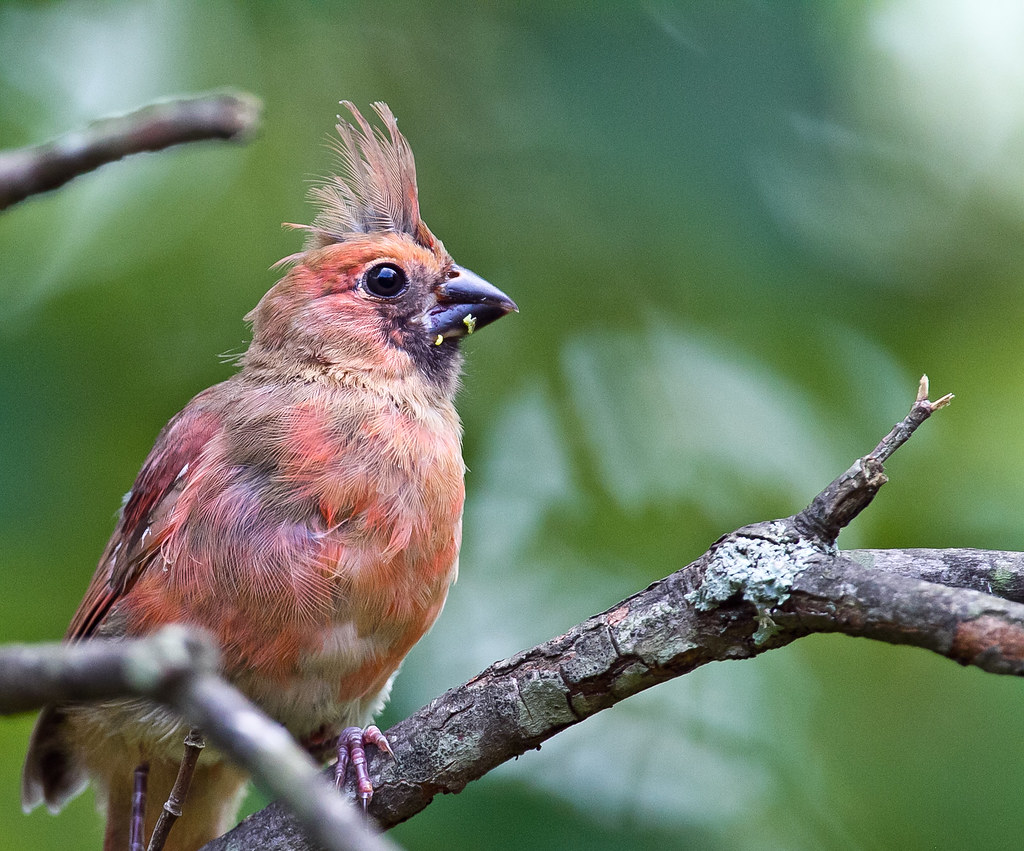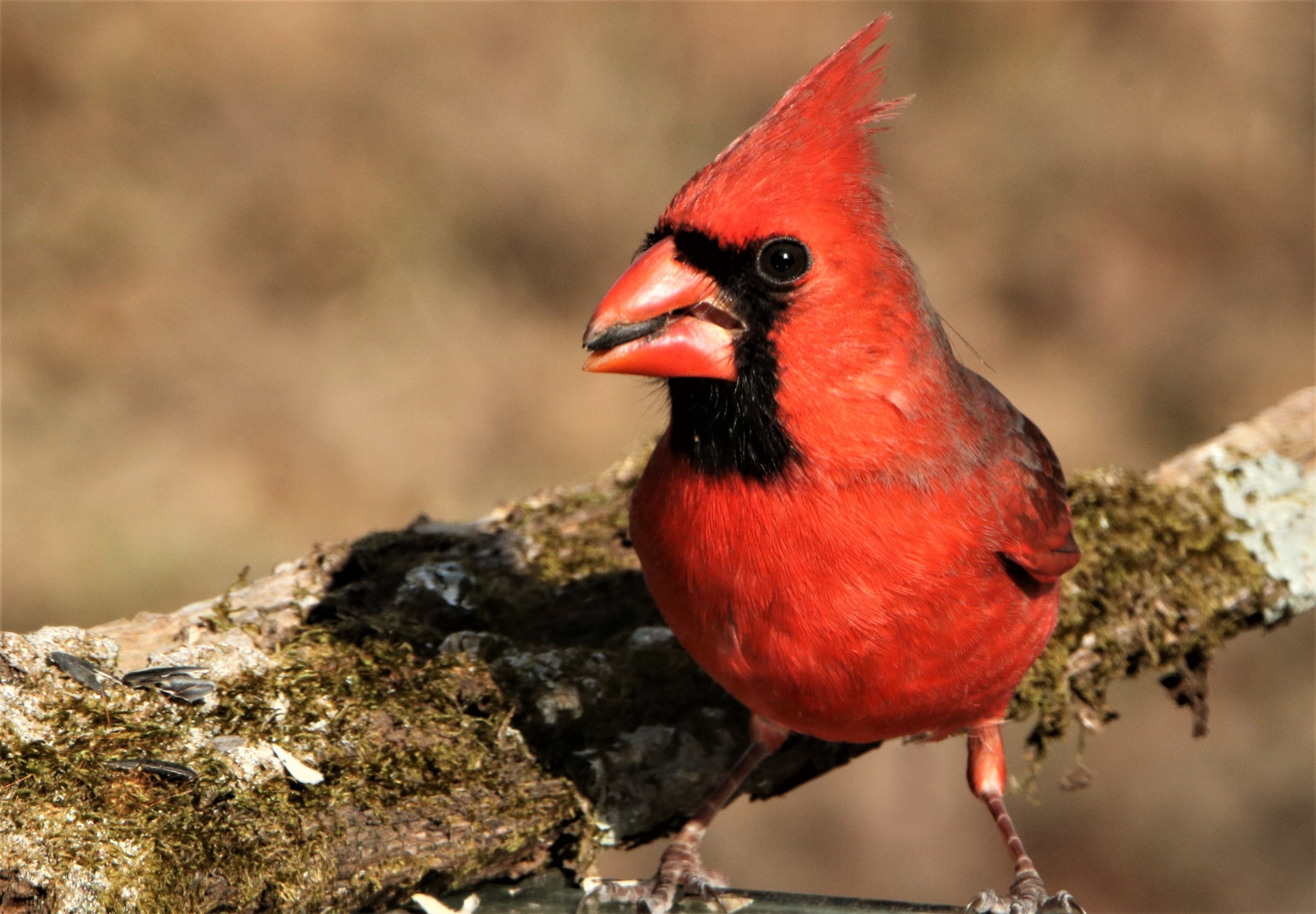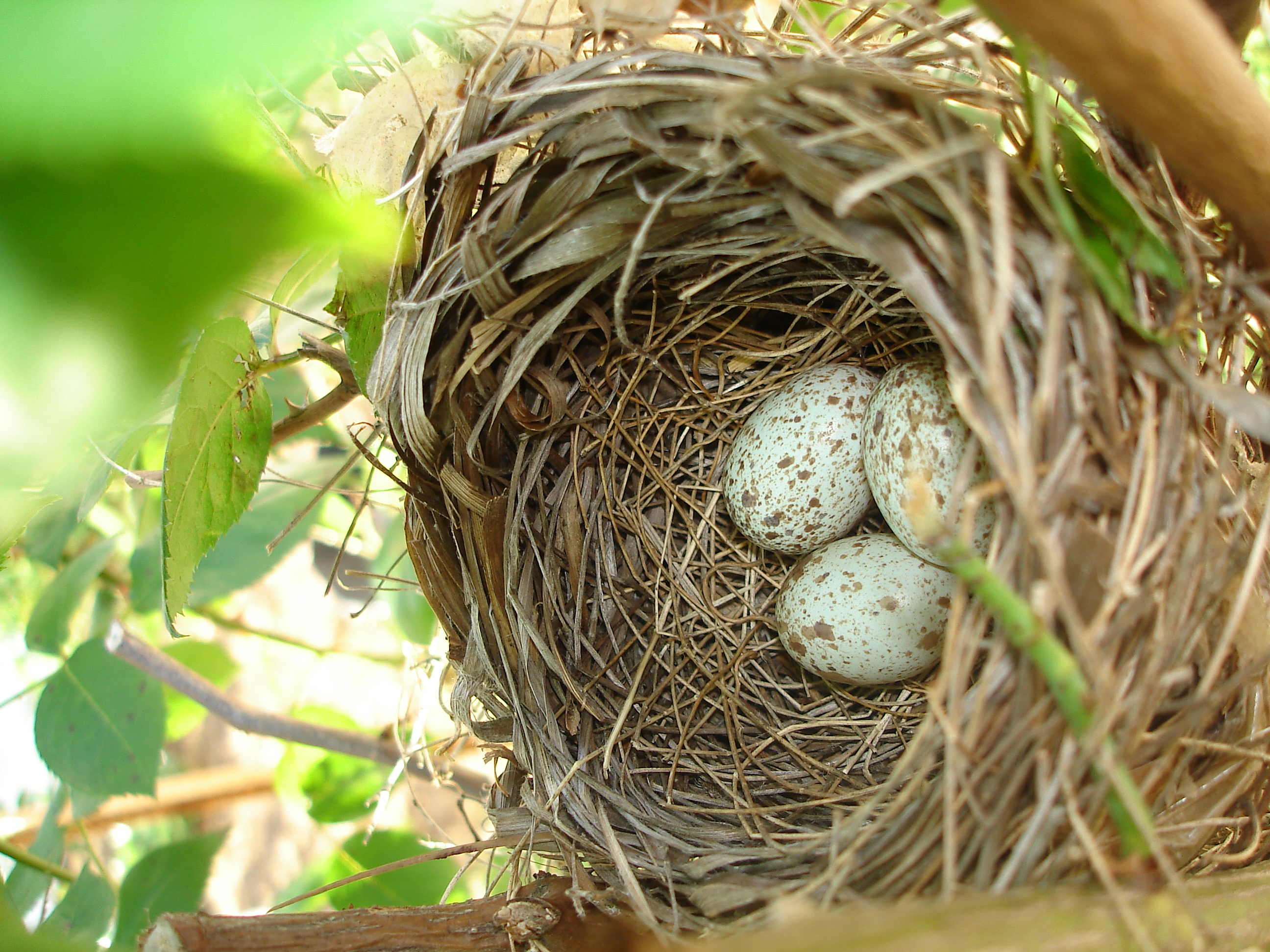Wonders of Wildlife: Northern Cardinal
Northern Cardinal
Scientific Name: Cardinalis cardinalis
Found in Alabama: Year-round, Statewide
Diet: Omnivore (eats plants and animals) |
|
Male Northern Cardinal in Habitat
Senior Airman Jensen Stidham
Click on image to enlarge it |
Learn more about...
| CLASSIFICATION |
| |
|
What type of animal am I?
- I am a vertebrate (an animal with a spine or backbone).
- I am warm-blooded, so I can control my body temperature.
- I have feathers on the outside of my body that keep me warm.
- I breathe with lungs just like you.
- I have 2 legs.
- I have wings.
|
Scientists use basic traits to group animals into different taxonomic classes.
For a taxonomic classification chart comparing key traits of common backyard wildlife,
CLICK HERE! |
|
| The Northern Cardinal is a BIRD! |
| IDENTIFICATION TIPS |
| |
|
Size: |
- Range in length from 8 - 9 inches
- Weigh 1 - 2 ounces
- Wingspan ranges from around 10 - 12 inches
|
| |
|
Key Characteristics: |
- Orange-red cone shaped bill
- Prominent crest (feathers that stick up on the head)
- Balck feathers on the face
|
| |
|
| Males: |
Females: |
Young: |
- Bright red in color
- Much brighter in color compared to the females and the young
|
- Light brown in color
- Hints of red near tail, wings, and chest
|
- Similar in appearance to female
- Bill is gray or black
- Crest on the head is shorter
- Color appears more dull
|
Male Northern Cardinal
Wikimedia - Hari Krishnan
Click on image to enlarge it |
Female Northern Cardinal
Wikimedia - Eric Appelt
Click on image to enlarge it |
Juvenile Northern Cardinal
flickr - ehpien
Click on image to enlarge it |
| ADAPTATIONS |
| |
| PHYSICAL ADAPTATIONS |
| |
| Northern Cardinal females avoid predators: |
- Female northern cardinals are responsible for incubating (keeping the eggs warm) which requires them to sit in the nest.
- Their dull brown coloration allows them to better blend in with their surroundings.
- This camouflage (blending in with the surrounding environment) helps them avoid predators (animals that eat them) more easily than the brightly colored males.
|
| |
| Northern Cardinals can crush seeds: |
- In the winter, fruits and insects become more scarce, so Northern Cardinals must rely on other food sources.
- The cone shaped bill of the Northern Cardinal allows them to crush the shells of larger seeds which are more available to them compared to other food sources in the winter.
- Because of their larger bill, they are able to eat larger seeds than many other songbirds, so they do not have to compete with as many birds for food sources.
|
Northern Cardinal with Seed in Mouth
Sheila Brown
Click on image to enlarge it
|
| Birds can fly: |
- Birds have feathers on their wings rather than hair like humans. Feathers are light, waterproof, and are adjustable for flight control.
- Birds have lightweight beaks instead of heavy jaws and teeth like humans.
- Most bones in their bodies are hollow or honeycombed, making them very lightweight. Some of their bones are fused for increased efficiency and lighter weight.
- Birds have a larger and more efficient respiratory system than humans do since flight is a physically-demanding activity.
|
| |
| Birds can digest whole prey: |
- Birds do not have teeth and are not able to chew food. Because of this, they have a specialized part of their stomach, called a gizzard, that helps with digestion by grinding food.
- The small stones, sand, and grit that birds pick up while they are eating are stored in the gizzard.
- Once food is swallowed and makes its way to the gizzard, it is pulverized by the grit and stomach muscles.
- Some birds like chickens, ducks, and turkeys have thick, muscular gizzards. Other birds that eat food items that are easy to digest, such as nectar and soft-bodied insects, have thin-walled gizzards.
|
| |
| BEHAVIORAL ADAPTATIONS |
| |
| Northern Cardinals are diurnal: |
- They are active during the day (diurnal).
|
| |
| Northern Cardinals communicate with one another: |
- Northern Cardinals use a variety of visual and vocal cues to communicate.
- Like many species of songbirds, the males sing and make displays themselves for the females.
- Northern Cardinals are somewhat unique because the females are known to sing more elaborate songs than males.
- These songs can provide information for the male about bringing food to the nest.
- Both males and females sing for courtship and to defend their territory.
|
| |
| Northern Cardinals defend against predators: |
- Both male and female Northern Cardinals are known to give an "alarm" call when a predator (animal that eats them) is near the nest.
- They may also fly towards the predator in an attempt to scare it away.
- They are more likely to do this in the spring when they have eggs or fledglings to protect.
- This aggressive protective behavior is the reason many people may see a Northern Cardinal fly into a window. It is not uncommon for birds to see their own reflection in a window and mistake it for an intruder or threat.
|
| LIFE CYCLE |
| |
|
|
| Life Cycle Stages of the Northern Cardinal |
| |
|
|
Nest: |
- Female builds a cup shaped nest composed of twigs, leaves, bark, grasses, and pine needles in forks of trees, vine clumps, or shrubs.
|
Northern Cardinal Nest and Eggs
Wikimedia - Marti175
Click on image to enlarge it
|
| |
|
Eggs: |
- Females lay 1 - 5 hard-shelled eggs per clutch.
- Eggs are whiteish with specks of pale gray or brown.
- Eggs are oval shaped and just over an inch long.
- They have between 1 - 2 clutches per year.
|
| |
|
|
Young: |
- Babies hatch from the eggs after 11 - 13 days.
- When they hatch, they do not have any feathers aside from a few patches of soft, gray down feathers.
- They remain in the nest for 7 - 13 days.
|
| |
|
|
Life Span: |
|
| NATURAL Habitat Needs |
ADULTS |
YOUNG |
| Food |
- In the summer, feed on invertebrates (animals without a spine or backbone) including beetles, crickets, butterflies, and spiders.
- In the winter, they feed on larger seeds that they can crush with their cone-shaped bill.
- Feed on seeds, grains, leaf buds, and fruits from habitats that include dogwood, wild grape, grasses, and sumac.
|
- Nestlings are fed mostly insects including beetles, centipedes, and crickets.
- They are usually fed whole food but are occasionally fed by regurgitation (parents spitting the food into the mouths of the young).
|
| Water |
- Food sources provide some of the necessary hydration.
- They will also drink from streams and ponds.
|
| Shelter |
- They live in areas with dense shrubbery and a relatively high place to perch including forest edges, hedgerows, and woodlands along river edges.
|
- The nest that is placed within the leaf canopy above provides protection for the young.
|
| Places to Raise Young |
- Build nests in trees, shrubs, or vines that provide dense leaf cover to keep them hidden.
|
|
BACKYARD
Habitat Needs |
ADULTS |
YOUNG |
| Food |
- Provide habitats that support insect life that include open areas with shrubs, trees, and other plants.
- Plant bristlegrass, blackberry, and wild grape.
- Provide a bird feeder with mixed birdseed, especially those that include sunflower seed.
- Do not spray pesticides that might harm insect populations.
|
- Provide food sources at birdfeeders for the parents and provide habitat suitable for adults.
|
| Water |
- Provide a birdbath if a stream or pond is not located nearby.
|
| Shelter |
- Provide areas with dense leaf cover or hedgerows.
|
- Providing nesting habitat for adults will provide shelter for young.
|
| Places to Raise Young |
- Provide shrubby areas with dense leaf cover.
|
|
| ECOLOGICAL ROLE |
| |
|
| Animals play an important ecological role in the health of habitats and ecosystems. |
| |
|
|
Food Source:
|
- Adult Northern Cardinals are often eaten by larger birds including Cooper’s hawks and eastern screech owls.
- Eggs and nestlings are eaten by a variety of reptiles and mammals including milk snakes, black racers, eastern gray squirrels, and eastern chipmunks.
- Other songbirds like blue jays and brown headed cow birds are known to remove and eat the eggs.
|
|
Predation by cats is the number one direct, human-caused threats to birds in the U.S. and Canada. In the U.S., as many as 2.4 billion birds are killed by cats each year. To read more about this, CLICK HERE! |
|
| |
|
|
Seed Dispersal: |
- Birds that eat fruits are responsible for spreading the seeds of the plants that they eat.
- Sometimes birds simply carry the seed away from the tree before dropping it.
- More often, after birds eat fruits and berries, they poop them out, covered in a natural fertilizer.
- This helps new plants grow in their new location.
- This form of seed dispersal (movement of seeds from one location to another) is an important part of plant reproduction and survival.
|
INFORMATION SOURCES FOR THIS SPECIES
.




 Wildlife Tag
Wildlife Tag
